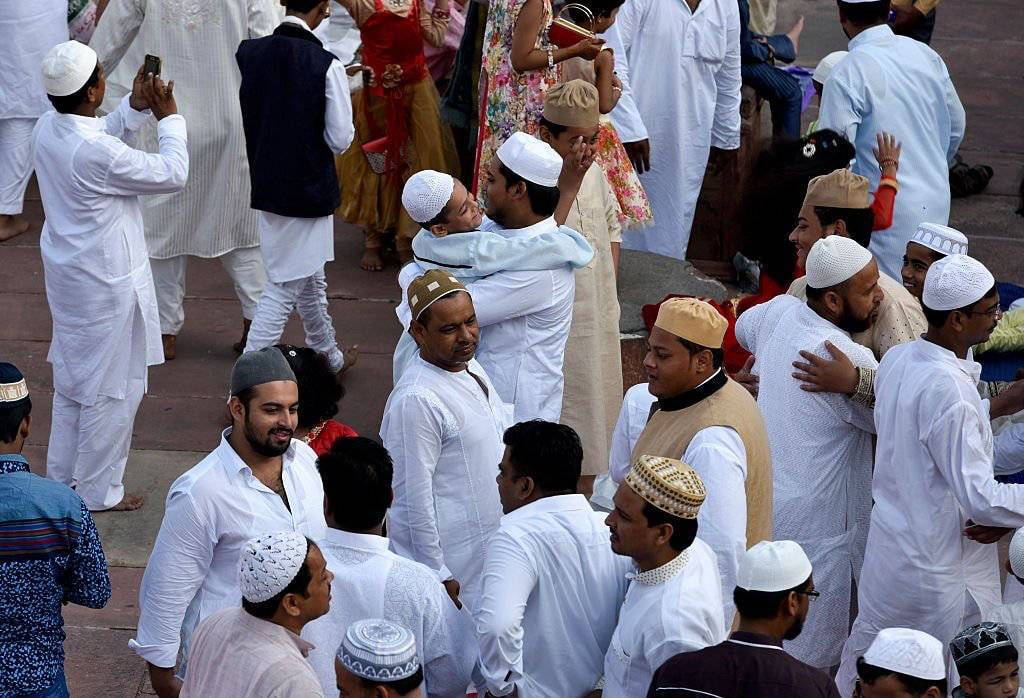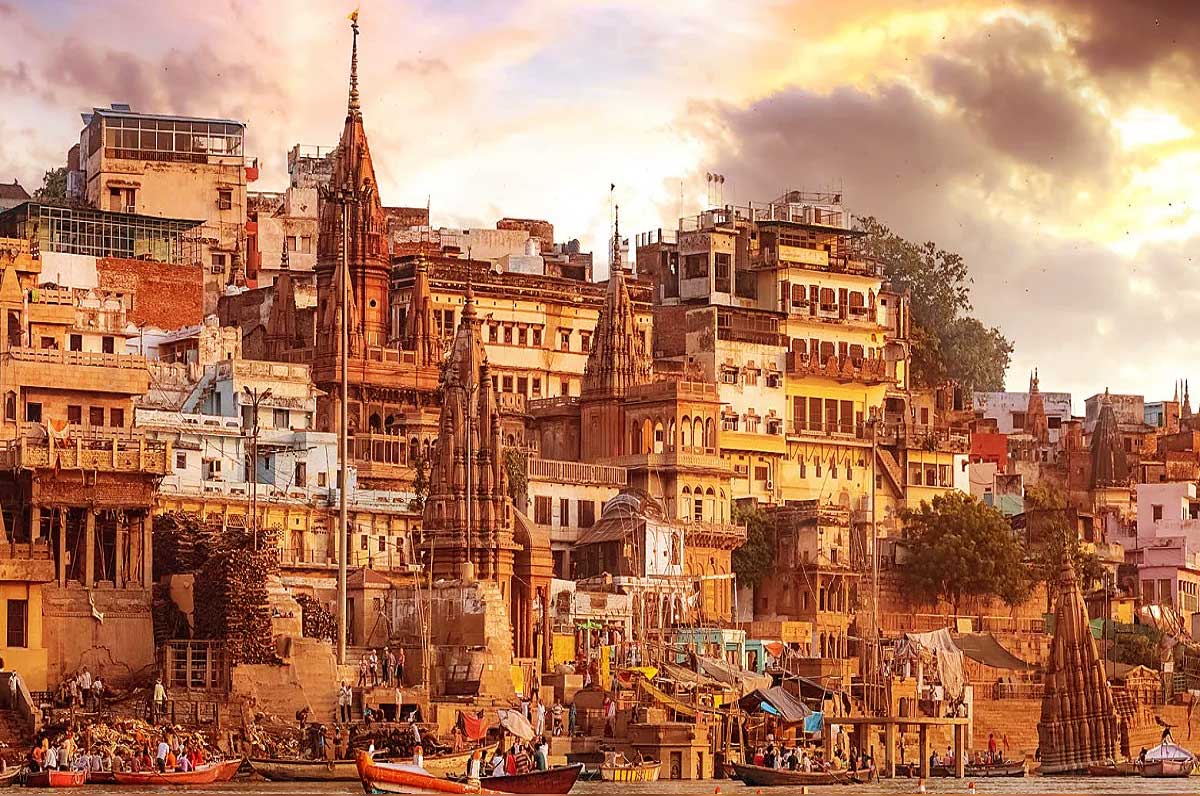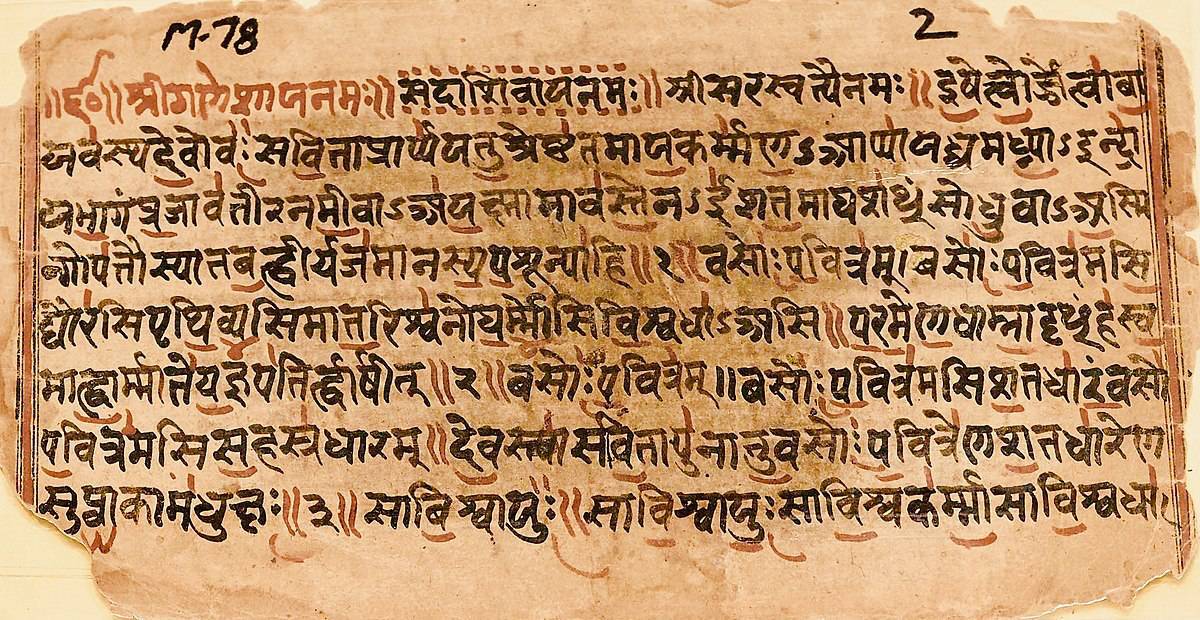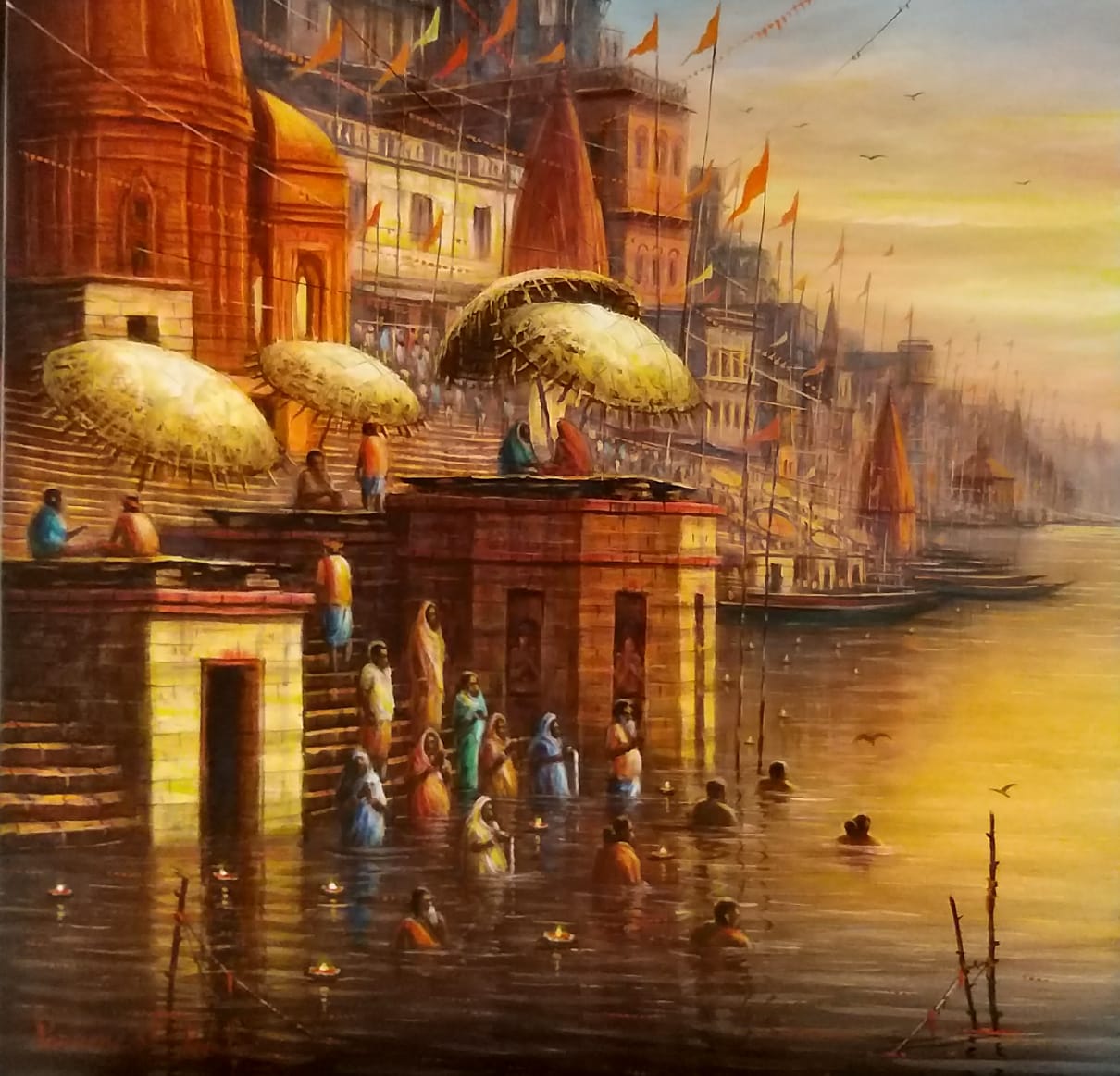MORE COVERAGE
Twitter Coverage
Satyaagrah
Written on
Satyaagrah
Written on
Satyaagrah
Written on
Satyaagrah
Written on
Satyaagrah
Written on
JOIN SATYAAGRAH SOCIAL MEDIA
Any caste discrimination as it exists today is a legacy of feudalism, colonialism and social stagnation: true picture of Hindu social structure

Bharat has been castigated for ‘caste’, a European construct which was force-fitted onto our Varna/Jaati social categories. Ironically, racist colonizing cultures which committed numerous genocides and engaged in slave trading are the ones that have been demonizing us by claiming that social discrimination is intrinsic to our society.
Caste
Any ‘caste discrimination’ as it exists today is a legacy of feudalism, colonialism and social stagnation, and is not sanctioned by Hindu shastras (scriptures). There is no ‘Brahmanical’ (a dog whistle term now employed by Hindu-haters to attack Hindu Dharma) text that supports such discrimination either.
In fact, social stratification is not specific to Bharat or to the Hindu faith. If this was not the case, those who move out of Hindu Dharma through conversion would immediately embrace utopian equality and egalitarianism, but Bharat’s converted Christians and Muslims identify with caste. The Muslim society in the sub-continent, apart from identifying with castes attributed to the Hindu Dharma, has its own separate hierarchy.
Indian Muslims are stratified into three main castes. At the top of the pyramid are the Ashrafs (literally, the ‘nobles’, who trace their ancestry to inhabitants of the Arab peninsula or Central Asia), Ajlafs (literally, the ‘commoners’, converts from Hindu Dharma) and Arzals (literally, the ‘despicable’, Hindu converts from marginalized sections of society).
The Muslim faith globally too is highly sectarian with belief-based divisions like Shia, Sunni, Ahmediya, Barelvi, Deobandi, Salafi and many other sects along with ethnic-based divisions and ethnic hierarchies in which Arab Muslims are considered the topmost and groups like Hazaras, Kurds, etc are oppressed. Subcontinental Muslims are also considered inferior to ‘pure-blood’ Arabs.
 |
Worldwide too, stratification exists in almost all societies and cultures. Racism is an ugly reality in Western Christian societies, which also have their own social pyramid for the White population. Feudal classes in Japan are comparable with Bharat’s social stratification system. Many other societies and cultures have had their own forms of segmentation and stratification which will be described in detail in another part of this series.
Should Hindus collectively carry the burden of ‘caste’? Does the ‘caste system’ have a basis in Hindu Dharmic scriptures? If it is not derived from Hindu Dharma, then why do some modern Hindus consider it as intrinsic to Dharma and something that we must feel apologetic about?
Scholars studying Dharma have analyzed this question of the origins of caste and arrived at the conclusion that Dharmic scriptures do not sanction any ‘birth-based caste hierarchy’. Scriptures instead classify human beings on the basis of qualities and such a categorization is called Varna. Even if some Hindus interpret shastras as saying that Varna is based on birth, they do not claim there is some hierarchy where one group is superior to others.
Dharma stresses on duties and responsibilities of humans towards their self and towards society, and not on rights that one group supposedly enjoys over the other. The prescribed life for a Brahmin is one of austerity and devotion to learning and spreading knowledge. The same goes for other varnas; the purushartha or four goals of human life are common for all: artha, kama, Dharma, moksha.
Varna versus ‘caste’
One analysis of whether ‘caste’ derives from Hindu scriptures establishes that Hindu scriptures only speak about Varna, not caste:
“…Madhvacharya in his Gita Bhashya (for 18th chapter) states:
ततः ऊनम् शमाद्ययिः यः शुश्रूषुः शूद्र उच्यते I
अधिकाष्चेद गुणाः शूद्रे ब्राह्मणादि: स उच्यते II
Which means that if a Brahmana lacks qualities like shama (i.e. Sense Control) etc., consider him to be a Shudra and vice versa. Thus, it is clear that Varna is based on qualities and not one’s family. It can also be noted that in Amara Kosha, which gives synonyms of each word, वर्ण (Varna) is not synonymous with जनन (birth), वंश/कुल/गोत्र (lineage, household or hereditary).
…The fact that the concept of Varna is intimately connected to the intrinsic nature and the actions that arise from it, is attested by no less than Bhagavan Krishna in Gita, when he says:
चातुर्वर्ण्यां मया सृष्टुं I
गुण कर्म विभागशः II
Please note the second line which says गुण, which means character/nature and कर्म, which means action/deeds.
The detailed description of each Varna:
- Brahmanas: They are those, who seek knowledge for its own sake, be it the knowledge of God or the knowledge of the mundane. They are philosophers, academicians, teachers, authors, thinkers and also priests. They can be compared to the modern day education sector.
- Kshatriya: They are those, who are interested in politics, administration, and warfare. They include kings, politicians, warriors, soldiers, police, etc. They can be compared to modern day government and defence.
- Vaishyas: They are those, who are interested in commerce, businessmen, traders, profit seeker, producers, and suppliers. Modern day industrial and commerce sector.
- Shudras: Shudra etymologically means, one whose heart melts to the sorrow and pain of others. These are people who provide service- workers in factories, farmers, workers in BPO, medical, and other services, and even soldiers in the military.”
 |
There was a small minority who lived outside this social structure: they were associated with certain unique professions like conducting cremations, skinning dead animals etc. But even they were supposed to be treated with respect as they perform a valuable social duty, and had the freedom to evolve their own distinct Dharmic traditions and communities.
Of course, sannyasis i.e. Hindu sadhus and monks who have renounced the householder’s life are beyond these categories of Varna. Both men and women from any varna or social group can take sannyas, usually after taking deeksha (initiation) from a Guru.
In today’s industrialized world, Bharat is witnessing a social churn as occupations evolve. A similar churn has taken place in other Asian societies which have successfully transitioned from agrarian feudal societies to industrial ones.
While ‘caste’ is physical stratification, Varna describes innate nature comprised of qualities. Society today has designed psychometric tests that determine personality type, leadership qualities, aptitude, emotional quotient, empathy quotient, and many other attributes. Varna was a similar differentiation composed of mental and psychological attributes. Perhaps, Varna divisions should be treated similar to personality classification based on aptitudes and qualities, although the Dharmic concept of Varna links these qualities to the manner in which the soul will evolve towards moksha.
Pre-colonization Dharmic societies
Although no society is perfect, foreign travellers to Bharat like Megasthenes (300 BCE), Faxian (400 CE), and Xuanzang (630 CE), in their travel diaries, reveal the existence of a humane society in the periods that they visited and stayed in Bharat. Many objective documenters have portrayed the society based on Dharmic precepts as egalitarian, welcoming of other cultures, hospitable, inclusive, and universal in outlook vis-a-vis most other civilizations.
In a recent interview, Ma Nithya Prasiddhananda, a Yoga+Ayurvedic practitioner from LA, California, suggests that Bharat had a fluid social system:
“…while social stratification existed since pre-colonial India, it was mainly the practices of Britishers that created a false definition and conception of the caste system because if we turn our attention to our Vedic literature, there are numerous instances of ‘Shudras’ and ‘Vaishyas’ who became kings; merchants and soldiers and nomads who were caste-less; large numbers of farmers who were also soldiers; and Brahmans who were farmers, soldiers, traders, or even kings One’s caste could be changed as easily as moving from one village to another. And such instances were not exceptions; they happened frequently.”
Another quality of pre-colonialism Dharmic societies is their self-reformatory and adaptable nature. Society adapted periodically as needed. For example, in response to the destruction of temples under the Muslim invasions, the Bhakti movement arose wherein wandering saints spread the message of Dharma house to house and village to village. Saints also promoted a form of Dharma that could be practised without engaging in temple-related rituals. Re-inventing the way Dharma is propagated and practised is perhaps one of the reasons that Bharat and Hindus survived the onslaught of two consecutive colonizations. No other civilization had the same resilience to survive.
New energy was injected into the ancient Sanatan/Hindu faith time and again as required by the likes of Arumuka Navalar, Dayanand Saraswati, Aurobindo, Swami Vivekananda, and Narayan Guru among others. The so-called new age spiritual associations like ISKCON, the Art of Living, Isha Foundation, and others are symbols of such Dharmic adaptability and self re-invention.
 |
Colonization and Caste
It was the British who infused caste identity into the Bharatiya society’s collective consciousness. In ‘The caste system is a colonial idea’, Rakesh Simha provides evidence of this. The Mughal invasion, he states ‘kicked off the process of caste inflexibility’ but in general, Islamic invaders did not try to meddle in Bharatiya society. Hindu resistance was strong and it was only after 170 years of resounding defeats that Arabs managed to find a foothold in Bharat. Also,
Realising it was futile for them to try and convert Hindus by force, Muslim rulers were content to impose their oppressive taxes, and life in India continued more or less as before.
Conversely, British colonizers tried to modify Bharat’s social structure. Thus:
The British, on the other hand, while systematically destroying India’s economy also tinkered with its social DNA. Nicholas B. Dirks, Chancellor of the University of California, has conducted an exhaustive study of how the British transformed Indian society for the worse. In his ‘Castes of the Mind: Colonialism and the Making of Modern India (2001),’ he says the concept of caste hierarchy was a British construct.
The article cites Dirks’ assertions on the British influence on caste:
…In pre-colonial India, the units of social identity had been multiple, and their respective relations and trajectories were part of a complex, conjunctural, constantly changing, political world.
The referents of social identity were not only heterogeneous; they were also determined by context. Temple communities, territorial groups, lineage segments, family units, royal retinues, warrior subcastes, ‘little’ kingdoms, occupational reference groups, agricultural ortrading associations, devotionally conceived networks and sectarian communities, even priestly cabals, were just some of the significant units of identification, all of them at various times far more significant than any uniform metonymy or endogamous caste groups. Caste was just one category among many others, one way of organising and representing identity.
Even the epic Dharmic icon Shivaji Maharaj hailed from a community that was considered Shudra and his coronation was opposed by a section of ultra-orthodox priestly class on these grounds. But then it was a learned Brahmin, Kashi’s Bishweshwar Bhatt, who declared Shivaji Maharaj to be a Kshatriya so that the coronation could go ahead. Additionally, like the Mauryas and Marathas, there are other examples of Hindu dynasties that came from traditionally non-Kshatriya clans – the powerful Cholas, Hoysalas, Chalukyas and the Rayas of Vijayanagar.
 |
It was the British, who made one of these fluid cultural-context parameters water tight in the form of ‘caste’:
Dirks’ claims are backed by Indian authors. M.N. Srinivas explains in Castes in Modern India: ‘It is well known that occasionally a Shudra caste has, after the acquisition of economic and political power, Sanskritised its customs and ways, and has succeeded in laying claim to be Kshatriyas… The term Kshatriya, for instance, does not refer to a closed ruling group which has always been there since the time of the Vedas. More often it refers to the position attained or claimed by a local group whose traditions and luck enabled it to seize politico-economic power.’
…S.S. Ghurye of Bombay University explains in Caste, Class and Occupation (1961) how the British infused caste identity among Indians by the simple task of conducting a census.
Moreover, feudal oppression which is often projected as ‘caste discrimination’ is largely a product of the zamindari system in practice under the British. The system of giving their commanders and lackeys large tracts of land began under the Mughals and continued under the British. The British gave their lackeys acres and acres of land and additionally granted them exemption from tax on agricultural income, thus creating a fertile environment for oppression of landless labourers. ‘Huge untaxed income gave the landlords inordinate power to dominate all spheres of life, particularly the dominance over the lives of their tenants.’ We continue to carry the scars of this feudal system that both sets of colonizers practised.
After the 1857 rebellion, the British passed laws like the Criminal Tribes Act to punish communities that fought against them, thus pushing millions into poverty and exclusion. Discrimination and destruction of native knowledge systems bred inferiority complex, and generated its own class consciousness between the Anglicized lackeys and ordinary Bharatiya subjects.
Overall, under the two consecutive colonizations which lasted for around 650 years, an environment was created that turned different indigenous population groups against one another in the battle to survive. While certain Hindu communities have been branded as ‘traitors’ for sporadic alliances with invaders, it was the Muslims who allied most with the British and hence Gandhi had to appease them by supporting the pan-Islamic Khilafat movement to buy their participation in the freedom struggle. But even this tactic failed and led to the Moplah genocide of Hindus, followed by the Pakistan movement soon after. The Anglo-Indian/Christian collaboration with the British is self-evident; after all, the British colonial rulers gave a massive push to the Christian missionary agenda as part of their ‘civilizing mission’.
 |
Going forward
The Hindu civilization was perhaps the only one that did not engage in slave trading or the kind of colonization that engages in genocide or looting and impoverishing other civilizations. Wherever Hindu Dharma spread like in South East Asia, it was through exchange of ideas and through full autonomy to the natives to merge Dharmic principles and deities with their local ethos and traditions.
As Dirks’ thesis proves, setting caste as identity was a ‘gift’ the British system endowed us with. After facing two consecutive colonizations, the society within did implode in the struggle for survival–with certain groups becoming dominant for intervals and oppressing other groups disenfranchised by the British system. Dwelling on this aspect takes away from the brutal persecution and multiple genocides all Hindus (of all communities) suffered starting from Muslim invasions. But Hinduphobes keep harping that ‘upper class’ Hindus have “enjoyed thousands of years of hereditary caste privilege.” Some white-washing of colonial crimes, that!
With urbanization and industrialization, the feudal system within Bharat is on its way to extinction except in certain pockets of the country and ‘caste oppression’ being one of the few areas in which the mainstream media performs its watchdog function in an exaggerated manner, even these pockets will soon join the mainstream. Indeed, there is growing evidence of a growing reverse discrimination against so-called ‘privileged upper class’ Hindus as seen in the abuse of the SC/ST Act, or the anti-Brahmin hate peddled in Tamil Nadu and some other states.
Unfortunately, what is in fact perpetuating caste consciousness and bitterness is the ongoing reservation system which the chief architect of the Constitution Dr. Ambedkar himself had wanted to be phased out after a decade or two. To repair a society impaired by strategically planted caste distrust, it is essential that reservations are phased out and not expanded as is currently being done by every political group, without exception.
References:
hindupost.in - By Anuradha
 Support Us
Support Us
Satyagraha was born from the heart of our land, with an undying aim to unveil the true essence of Bharat. It seeks to illuminate the hidden tales of our valiant freedom fighters and the rich chronicles that haven't yet sung their complete melody in the mainstream.
While platforms like NDTV and 'The Wire' effortlessly garner funds under the banner of safeguarding democracy, we at Satyagraha walk a different path. Our strength and resonance come from you. In this journey to weave a stronger Bharat, every little contribution amplifies our voice. Let's come together, contribute as you can, and champion the true spirit of our nation.
 |  |  |
| ICICI Bank of Satyaagrah | Razorpay Bank of Satyaagrah | PayPal Bank of Satyaagrah - For International Payments |
If all above doesn't work, then try the LINK below:
Please share the article on other platforms
DISCLAIMER: The author is solely responsible for the views expressed in this article. The author carries the responsibility for citing and/or licensing of images utilized within the text. The website also frequently uses non-commercial images for representational purposes only in line with the article. We are not responsible for the authenticity of such images. If some images have a copyright issue, we request the person/entity to contact us at This email address is being protected from spambots. You need JavaScript enabled to view it. and we will take the necessary actions to resolve the issue.
Related Articles
- Jo Chopra, an NGO Director misled about Christmas being banned in Uttarakhand to malign Hindutva, apologizes after being called out
- Call it communism, 'wokeism' or Left leaning political ideology; secularism for sure has its ways to lose a friend
- Snappy wisecrack of Rahul Gandhi on ‘Hindu vs Hindutva’ and his frequent trips to temples and other confusing steps
- Devkinandan Thakur's statement is a slap in the face of the Islamist hoodlum from Hyderabad - “Many more Yogis and Modis standing in line…”
- Dangerous plots of Khalistan uprising and Hindu genocide, hurling abuses to Hindu Gods, arrest of Hindus for ‘blasphemy’ when retaliating - The menacing truth of underbelly of Clubhouse
- Mohammedans trying to shield culprits of anti-Hindu atrocities by spreading paranoia over Bajrang Dal rally in Haryana’s ‘Mini Pakistan’
- ‘Casteless Hindu’ is Not a Paradox. It is The keystone of ‘Ghar Wapsi’ and Hindutva
- Karkardooma Delhi court slapped a fresh sedition charge against Sharjeel Imam over his provocative speeches in Jamia Millia Islamia University and Aligarh Muslim University during anti-CAA protests
- Video of Hindu Suraksha Sena members pledging to make India a ‘Hindu Rashtra’ in Chhattisgarh went viral: Case has been registered against the people owing the language used by them could disturb communal harmony
- Tales of Fraud, funding, forced religious conversion and insulting Hindu gods and goddesses after brainwashing: How tribals were converted to Islam in Gujrat - “Aapka paigam London pahucha diya hai, achha kaam ho raha hai"
- The former RAW officer claims that Ex Muslim Vice President Hamid Ansari while serving as an Indian Ambassador to Iran exposed the RAW set-up in Tehran endangering the lives of RAW unit members
- Order of banning loudspeaker in hawanshala is taken back by Ambaji Mandir administration: Gujarat
- White supremacist Law Professor Amy Wax of Penn University displayed her hatred for Bharat by attacking Indian immigrants in the United States and referring to India as a ‘shithole’
- Indian movies have become propaganda platform to distort real incidents and perpetuate lies
- Dewan Bahadur saheb was made to quit as a Speaker because he wasn't a Muslim: Tragedy of a Christian leader who backed Pakistan’s creation



























